The Ministry of Defence has confirmed that the Type 26 frigate programme is experiencing delays and cost overruns but insists the project remains on track to replace the Royal Navy’s ageing Type 23 fleet.
Responding to a parliamentary question from Mark Francois, Conservative MP for Rayleigh and Wickford, Minister for Defence Procurement Maria Eagle acknowledged the schedule slip and additional costs:
“As confirmed in a Written Ministerial Statement released on 2 November 2022 (HCWS352), the Ministry of Defence is forecasting a 12-month delay to the Type 26 Initial Operating Capability from October 2027 to October 2028. The associated cost growth is forecast to be £233 million; an increase of approximately 4.2%.”
Despite the setbacks, the MoD is investing in infrastructure at the Govan shipyard to accelerate production. “Investment in new facilities at Govan to increase productivity includes a new Shipbuilding Outfit Hall, Shipbuilding Academy and steelwork panel lines. The new Shipbuilding Hall will enable the construction of two ships undercover simultaneously,” Eagle explained.
The enhancements are intended to “improve schedule performance and the pace of delivery, allowing the time between ship deliveries to be reduced.”
Eagle assured that the delays will not create a capability gap for the Royal Navy, stating: “Type 26 will be a world-beating frigate and the class will be delivered in time to take on the anti-submarine warfare duties of the retiring Type 23 ships.”
The programme has faced delays and pressures stemming from several factors:
- Engineering and Supply Chain Issues: The report highlights delays caused by the volume of outstanding engineering design and challenges within the supply chain.
- The residual effects of COVID-19 slowdowns have also contributed to a re-baseline of the schedule for Initial Operating Capability.
Despite these setbacks, the Amber rating indicates that while significant risks remain, successful delivery is achievable with sustained management attention and mitigation effort, you can read more on this here.
Eighth Type 26 Expected by 2035
In a separate parliamentary question, Lord West of Spithead, a Labour peer and former First Sea Lord, asked when the eighth and final Type 26 frigate would enter service. Responding on behalf of the government, Lord Coaker, Minister of State for Defence, confirmed:
“The T26 programme remains on track to meet all user requirements and deliver eight world-class anti-submarine warfare frigates in time to replace the anti-submarine warfare T23s. All ships are expected to enter service between 2028 and 2035.”
At the UK Defence Journal, we aim to deliver accurate and timely news on defence matters. We rely on the support of readers like you to maintain our independence and high-quality journalism. Please consider making a one-off donation to help us continue our work. Click here to donate. Thank you for your support!


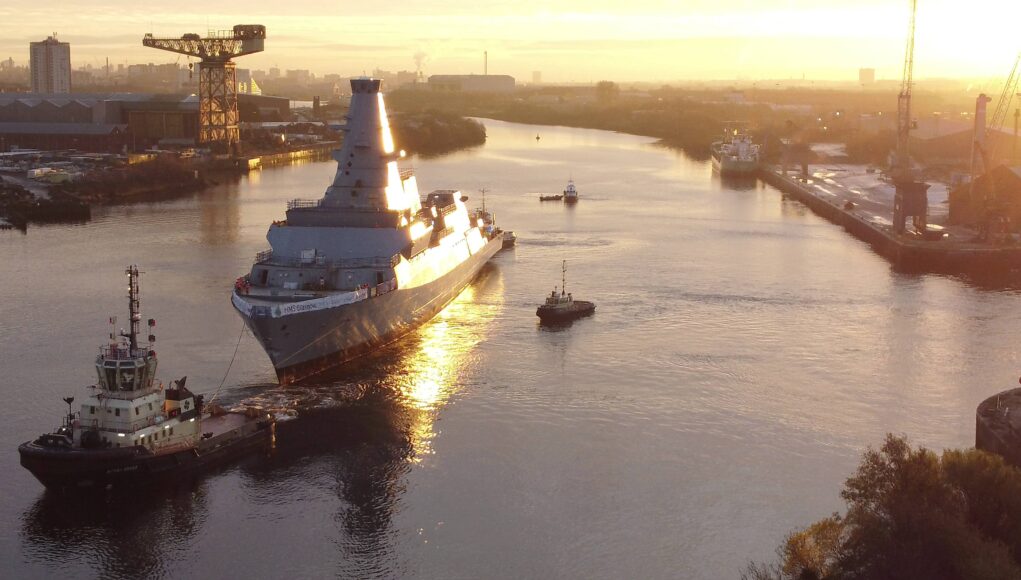

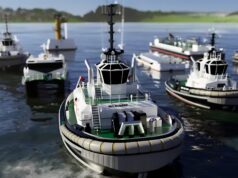
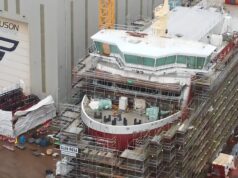
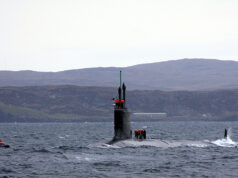
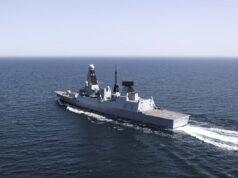


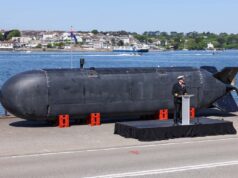
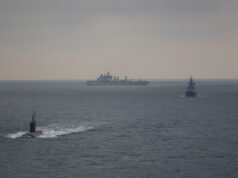
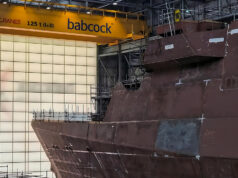

Delays and cost overruns? imagine my surprise, surely this is a first for this MoD
4.2% is trivial on a multi decade project if this complexity.
I’d rarely come out batting first BAES Cnut if that is true it is really good given the rampant inflation and COVID supply chain issues.
Agreed, a 4.2% variance and 1 yr. projected delay to IOC are truly trivial matters, barely rounding errors, in a programme destined to update NATO ASW capabilities. Have stated previously that B2 T-26s are a remarkably good value-for-money proposition. Any doubters? Interview anyone associated w/ the USN Consternation Class program on a non-attribution basis. An FFG development program which announced a 3 yr. delay before official program start, employing contractor yards which produced the Little Crappy Ship (LCS) class, and apparently has a program structure which entitles every man-jack to change the spec. at will. Sorry folks, that is the self-evident definition of a program that one should be concerned/bitch about. Oh, and BTW, this is a major requirement for a service that will be sailing in harm’s way in the foreseeable future. There are certainly programs that the MoD/RN could fairly be critiqued re performance; T-26 is simply not one of them. BZ to the programme office at the Admiralty, and the contractor team. Care to throw a tow line to your former colonists?
I’m interested to know how a programme can face delays and cost over runs and still be on track. Impossible comes to mind. Political goobblygook.
Sounds as though they need to call on Sir Humphrey’s help to sort out their narrative
No, you need Bernard Woolley for that….
They probably rebaselined it. It was forecast to October 2028 a little over two years ago (Nov 2022), with the information slipped into a review note and a subsequent written ministerial statement. You can also find an explanatory note online from David Williams, MOD Permanenet Secretary. So there has been no official catch up toward the original 2027 date, and no further slippage since then. The forecast increase in budget of £233m is exactly the same as was discussed back in 2022.
Even back then they were talking about it still being “on track” to deliver the capability.
Because you aren’t reading what it actually says but what you think it says ! That’s down to the semantics.
The “Project” is to provide 8 T26 to replace the T23 between 2028 and 2035. And it’s on schedule and within overall cost.
The “programme” is how you achieve the project and you can have delays and cost overruns within a part of the programme and still meet the overall project objectives. The way they are doing that is by mitigating the impact of those delays and cost overruns by the extra investment which speeds the rest of the programme and delivers savings due to increased efficiency.
Just think of the “Project” as being a car journey to meet an appointment so it’s leave A at 09:00, get to B at 12:00 and don’t drive like a lunatic.
So you set off on the Motorway at a nice steady economical 60mph and you have allowed 15 mins for a stop somewhere so that’s your “programme”. Unfortunately you find you need 2 stops due to a curry last night.
So you just increase your speed to 65 – 70 and get to B on time. Project completed 😉
Good man, you’ve saved me from typing this.
The 4% cost over run is pretty minimal compared to most defence programs. The 1 year delay is devastating. Hopefully Babcock can do better with the T31 as our escort force will soon cease to exist.
This may be why we now see news about Protector operating in the UK.
Type 31’s are currently approx 18 months behind schedule
4% overrun on this programme, plus excess costs keeping T23 active for longer, plus other assets being maintained and gap filling, plus another year of inflation. It quickly spirals.
“…plus excess costs keeping T23 active for longer, plus other assets being maintained and gap filling”
good point.
Neglect. I did not notice that word in the report. I suppose our stockpile of white flags is up to scratch?
Having served in the RN for over 24 years and knowing it’s history pretty well. The Royal Navy goes down fighting. No white flags in the flag lockers.
And before you mention the incident in the gulf in 2007, 2 RIBs severely out numbered/gunned do not constitute a warship.
So its on time but not on time? Forgot silly me. “Eaglespeke”.
It is on track Minister, and progressing along that track in the desired direction. It would be churlish to quibble about whether it is currently in a state of motion or stasis, and to what extent one might conceive of it arriving at the destination at the end of the track according to any particular chronology. Time is fluid, Minister, and not easily contained…
Let’s not forget covid happened during this ships build.
A plague, a world shut down, constant pissing around over brexit, 10% inflation because of Ukraine and more prime ministers than ships during the life of this project!
Personally I think their doing pretty well. I would like to see some kind of financial insentive to speed things up. It’s surely cheaper to speed this up than keep fixing type 23.
10% inflation because of Russia’s invasion of Ukraine. It’s not Ukraine’s fault. I guess overall only a 4% rise isn’t bad. There might be more to come 1 or 2% per year but as we are all earning more we will be paying more taxes.
10% inflation has minimal to do with Russian invasion. You might want to look how much money printing there was in COVID.
It’s on track but delayed? I’ve tasted every flavour of bull shit now.
Did they factor the new facility into the original timescales? If not it may be possible to catch up.
It must be blindingly obvious now that the solution to so many of the RN problems is to have continuous building programmes. That would require a base design flexible enough to upgrade sensors and weapons over perhaps a 20 year construction run. Since we are only looking at @ 20 hulls, delivering one a year should be achievable and avoid the gaps we currently have. Having small numbers of completely different designs is the most expensive approach and the one most prone to delay.
Absolutely! Surely we can design a general-purpose hull, with options for AAW or ASW, and just bash them out. Though a concern would be loss of ship design skills…
Mitigation efforts; converting Argyll to ASW….for Chile of course 🙂
The problem is what you want the limited number of dockyard workers doing?
If you want the SSNs in tip top form – now we have dry docks?
Or do you want to invest all that into trying to convert an old ship into something slightly different?
A lot of skilled man hours they could be building T31, fixing submarines or refitting QEC have been spent refitting Bulwark and T23’s as well as emergency repairs to both PoW and QEC and of course everyone’s favourite PiP.
The big issue is the lack of skilled labour. Going from a lot of ship maintenance to surely running two frigate build and ramping up submarine production has over stressed workforce availability.
Fair point. I was just intrigued by the change of tack with Argyll. I guess she could be sailed or towed to wherever Chile had their T23 fleet fitted with new radars. Have to say that having got ourselves into a mess with limited budget we have seen a stream of pragmatic decisions; B2 Rivers, T31, project Napier, NSM, Ceptor, Martlet, Sea Venom, retiring the LPDs. The RN is down but not out, well on the way with T26 and T31 to being regenerated.
I’m sure that more skilled labour could be found, if they offered halfway-decent pay. A friend who’s an expert welder looked at what they were offering for working on the subs, and went to start his own firm instead.
Might end up costing as much as the Glen Sannox and Glen Rosa ferries.
No surely it can’t end up being as big a disaster as the Glenn Sannox & Glen Rosa Scottish Ferry Fiasco 😅
As seemingly everyone knows except the people actually making decisions, what we really need is a steady drumbeat of one commission per year so that a trained workforce is keep continually employed. Instead we keep on having these peaks and troughs. It’s same everywhere, the tunnellers on Crossrail should have moved straight on to HS2, followed by the DLR and then the Bakerloo Line extensions. But given where we are 4 percent seems a pretty small overrun.